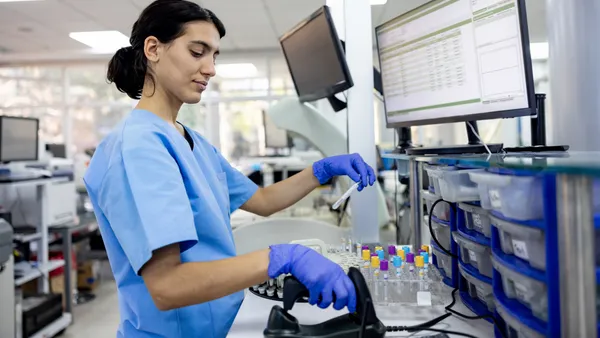Editor’s Note: David Persing, chief medical and scientific officer at Cepheid, a Danaher operating company, is an expert on molecular diagnostics and anti-microbial resistance. He has spent most of his 30-year career focused on biomarker discovery, translational medicine and innovation in the diagnostics space. Views are the author’s own.
Over the past several months, we’ve grappled with stressors on our global supply chain and one glaring example is the shortages of antibiotics, such as amoxicillin and penicillin, which are used to treat various infections. Drug manufacturers are now warning that this shortage may extend until well into 2024, and this unwelcome news comes at a dangerous time for public health, when several independent risk factors present a risk of snowballing into a larger crisis.
We tend to associate the winter months and holiday season with surges in viral illnesses, such as COVID-19, influenza, respiratory syncytial virus (RSV) and the common cold, and some of that has to do with increased air travel and social gatherings.
This year, the risks will persist year-round. We can’t afford to underestimate what the remaining days of summer and the coming fall have in store for us, especially with the new Eris subvariant of COVID-19 on the rise as we prepare to head into the respiratory virus season. This spring, we’ve already experienced a surge in human metapneumovirus (hMPV) – a respiratory virus related to RSV – a highly contagious stomach virus, new strains of strep, and of course new COVID-19 infections.
At the same time, the U.S. Federal Public Health Emergency declaration for COVID-19 ended in May, and so much of the pandemic preparedness and response infrastructure we built, scaled and strengthened based on our learnings during the pandemic is gradually being stripped away. The U.S. Centers for Disease Control and Prevention is no longer actively surveilling or reporting new COVID-19 infections, and fewer people are getting tested when they experience respiratory symptoms.
As we face a potential surge in summer illnesses and a longer-term shortage of antibiotics that are needed to effectively treat common infections such as strep and syphilis, this is a significantly risky time for patients and healthcare providers to have less information and fewer resources at their disposal.
There is a solution that hinges on the role of diagnostic testing. The CDC estimates that at least 30% of antibiotics prescribed in the outpatient setting are unnecessary, meaning antibiotics weren’t needed to treat illnesses of the patients to whom they were prescribed. We are dangerously squandering precious resources. We can avoid waste of the already limited supply of these effective medications by employing highly accurate, reliable and fast diagnostic tools.
An accurate diagnosis is the essential first step in ensuring a patient receives the appropriate treatment in a timely manner. Multiplex molecular PCR tests can detect and differentiate multiple similar diseases from a single sample, a valuable tool when confronted with respiratory ailments with similar symptomology, such as COVID-19, influenza and RSV. And that one sample and test result could be the difference between a patient with viral COVID-19 getting an antibiotic that will prove to be ineffective and a patient with bacterial strep receiving a prescription that will put them on the path to recovery.
A shortage is scary, in a time when we are all frankly tired of being afraid. But we can protect individuals and broader public health by remaining vigilant, and we owe it to everyone to practice good antibiotic stewardship. We do this by making PCR testing part of routine standard of care while we navigate a precarious fall and every season that follows amid this shortage.










